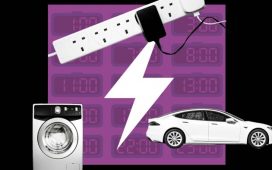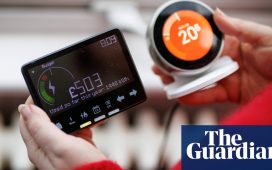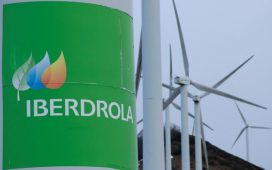Unlock the Editor’s Digest for free
Roula Khalaf, Editor of the FT, selects her favourite stories in this weekly newsletter.
The world is adding renewable energy capacity at record speed. Solar farms are sprouting up in the deserts of Arizona, wind turbines are swirling along North Sea coastlines, and hydroelectric plants are being etched into European mountainsides. Billion-dollar green policy packages — including the US Inflation Reduction Act and the EU’s “REPowerEU” strategy — are propelling the boom. Global investment in renewable power last year surpassed $700bn, over double the amount in 2015. For all the progress, though, there is a major snag: too much of it is going to waste.
Green energy generation is intermittent. Solar panels need sunny days. Wind turbines thrive on gusts. That means when they are generating electricity it is all the more important that it is fed into the grid for use, or stored away. Grid and storage capacity has, however, fallen behind the growth in renewable energy sources across the world, as a report from the International Energy Agency will reveal on Wednesday.
As a result, significant volumes of green energy capacity are being held back. In America, close to 2,500GW of renewably sourced electricity was waiting to be connected to the grid last year, according to the Lawrence Berkeley National Laboratory.
In some cases, governments have had to pay renewables companies not to generate electricity, at taxpayers’ expense, to avoid clogging up the network. Supplies that have nowhere to go also push down prices and act as a disincentive for future green investment. In Europe, power prices have fallen below zero for a record number of hours this year. Above all, troubles with the grid make it harder to cut reliance on burning more reliable, yet high-polluting, fossil fuels to meet energy demands.
What needs to be done? The obvious answer is for governments to support the development of the grid. The pylons and cables that shift electricity from new plants to households and businesses have become the forgotten, less sexy, part of the green transition. Grid upgrades need to dovetail with renewable investments. Regulation needs streamlining, too. Arduous planning processes and Nimbyism regularly impede grid development. Wind energy projects in Europe can sometimes face waits of up to nine years to receive a grid permit.
But better storage capacity is the other piece of the puzzle. Pumped storage hydro projects — like those around Loch Ness in Scotland — use surplus electricity to pump water up to reservoirs, which act as a cache. This relies on steep topography, however. Elsewhere, grid-scale storage is essential. Private investors are quickly moving into storage research and development. But policymakers have an important role. California, for instance, has become a leader in battery storage through a combination of incentives for homeowners to install batteries and mandates for utility companies and builders. International co-operation to strengthen supplies of critical minerals used in storage technologies also remains key.
Grids need to be better managed too. Digital technology, sensors and software can help monitor and match energy supply and demand. And better connectivity would support efficiency. For instance, the lack of integration across the EU’s energy network means it cannot quickly shift renewably sourced electricity from production areas to regions of high demand.
Despite progress in the green transition, global temperature goals are still on a knife-edge. Rising populations, economic growth and artificial intelligence will add to energy demands. Further efforts to build green energy capacity are needed. But it must come with the investment and regulatory reform needed to develop bigger, stronger and smarter networks, and storage capacity. Otherwise, much of the world’s renewable energy potential will remain untapped.










